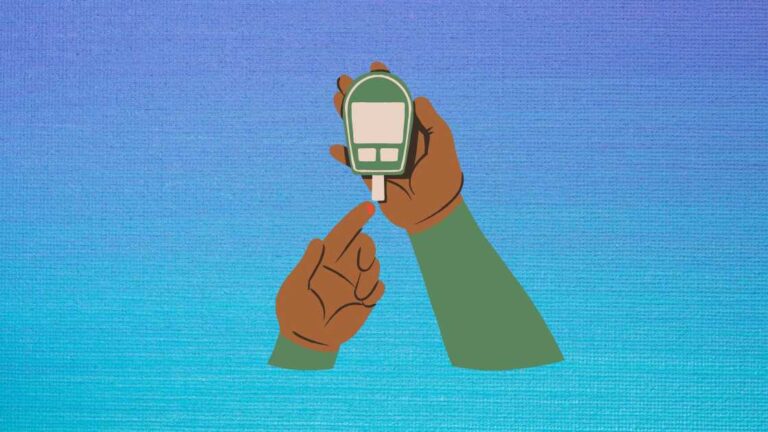What is commonly misdiagnosed as pink eye?
Pink eye, commonly known as conjunctivitis, is an infection of the thin layer of tissue that lines the inner eyelid and covers the white area of the eye. It’s most common in kids, very unpleasant, and it’s often quite contagious.
But what if your red, itchy eyes, swollen eyelids, and gooey discharge aren’t the symptoms of pink eye? What other eye disorders have symptoms similar to this, and how can you tell them apart?
We’ll talk about the eye disorders that are misdiagnosed as pink eye in this article.
What is pink eye?
Conjunctivitis is usually referred to as pink eye. Conjunctivitis is an inflammation of the conjunctiva, a thin membrane that covers the white of the eye (the sclera).
Small blood vessels in the conjunctiva become more apparent as they get irritated. It’s because of this that the whites of your eyes seem reddish or pink.
A bacterial or viral infection, an allergic reaction, or in babies (an incompletely opened tear duct) are the most common causes of pink eye. Pink eyes can affect one or both eyes at the same time.
Red eyes, itchy eyes, discharge, a grittiness sensation, eyelids that are crusty and difficult to open after sleeping, eyes that are watering are all symptoms of pink eye.
Pink eye doesn’t usually cause long-term vision problems, although it can damage the cornea.
Types of pink eye (Conjunctivitis)
There are several varieties of conjunctivitis, each with its own set of causes and treatment options.
Infectious
Pink eye is most commonly caused by infectious agents. It might be caused by bacteria or a virus.
Bacterial conjunctivitis
Bacterial conjunctivitis is highly contagious and can be treated with antibiotics. It can spread from one contaminated person or object to another.
Viral conjunctivitis
A virus similar to the common cold can cause viral conjunctivitis. It can be passed from person to person in droplets or from your body’s other mucus membranes to your eyes. It is impossible to treat viral conjunctivitis; it must be allowed to take its course.
Allergic
Allergens coming into contact with the eye and inflaming the conjunctiva causes allergic pink eye. It can be treated with antihistamines and eye medications, but it’s best to consult your optometrist before starting any treatment.
Chemical
A reaction can occur when an irritant enters the eye from the environment, causing the conjunctiva to become inflamed. Flushing the eye usually removes the irritant and relieves symptoms.
What eye conditions are misdiagnosed as pink eye?
There are a few eye disorders that might easily be mistaken for or misdiagnosed as pinkeye. We’ll look at several different eye illnesses that are misdiagnosed as pink eye in this section of the article.
Glaucoma
Acute angle-closure glaucoma is a kind of glaucoma that can cause red eyes and poor vision. This vision-threatening illness is also accompanied by pain, nausea, headaches, and vomiting. It’s a medical emergency that requires immediate attention.
Iritis
Iritis is a condition in which the iris, or colored portion of the eye, becomes inflamed. It can strike suddenly and usually affects only one eye at a time. Among the signs and symptoms are:
- A pupil that’s abnormally small or strangely shaped
- Blurry vision or vision loss
- Headache
- In intense light, severe eye pain
- Redness, particularly around the iris
- Pain in your eye or brow area
Iritis is sometimes misdiagnosed as pink eye, which is dangerous because iritis can cause serious harm, including vision loss. Medication can be used to treat it.
Keratitis
Keratitis is an open sore on the cornea, which is the transparent covering that covers the front of the eye. Many of the same symptoms as pink eye can be found with this condition, including:
- Pus or discharge
- Vision is blurry
- Sensitivity to light
- Eyelids swollen
- Redness
- Pain in the eyes
- Soreness
- The sensation of something being in your sight
- Eyes that are watering
- The cornea has a white mark on it.
When you suspect an eye infection of any kind, it’s critical to see your optometrist. While pink eye usually goes away on its own, severe keratitis may necessitate a corneal transplant.
Blepharitis
Blepharitis is an inflammation of the eyelids that lasts for a long time. Dry eye syndrome, which has certain symptoms with pink eye, is frequently caused by it. A buildup of germs around the eye, as well as certain skin diseases, can cause this condition. It can cause a variety of symptoms, including:
- Around the eyes, there is flaking skin.
- Eyelids that are oily
- Eyes that itch
- Sensitivity to light
- Eyelids that are red and swollen
- Eyes that are red and inflamed
- Eyelids that are burning
- Vision is blurry.
- Crusting of the lashes and the corners of the eyes
- Blinking too much
- Eyelids that are stuck together
- Eyes that are watering
Though there is no treatment for blepharitis, your optometrist can help you manage the condition and alleviate the symptoms.
Stye
A stye is a tiny lump on the inside of the eyelid that can cause pink eye symptoms such as:
- Puffiness of the eyelids
- Crusting in the vicinity of the eye
- Sensitivity to light
- Soreness
- Itchiness
- Eyes that are watering
- The feeling of something in the eye
- Pain around the bump
Styes are similar to pimples in appearance. Blocked oil ducts in the eyelids are the most common cause, and they can occur on the edge, outside, or inside of the eyelid. Styes, unlike many other types of pink eye, are not communicable.
Chalazion
A chalazion is similar to a stye, except chalazia form in the center of the lid, whereas styes form along the lash line. A stye can sometimes turn into a chalazion.
The following are the characteristics of these little bumps:
- Tenderness around the eye
- Eyes that are watering
- Mild inflammation of the eyes
- Vision is blurry
- Soreness
- Redness
- Swelling
Are children susceptible to pink eye?
Pink eye seem to be more common among children. Because children spend more time in close quarters, playing and sharing toys, they are more likely to spread pink eye than adults.
Kids may not yet have the hygienic skills to properly wash their hands, or the amount of control required to avoid rubbing or itching an irritated or painful eye (understandably—tough it’s for many adults, too).
This can result in the infection re-infecting the eye or spreading to the other eye.
Can babies get pink eye?
Newborns are also more prone to conjunctivitis infections that are more dangerous. Pink eye can be transmitted bacterially or virally during a vaginal birth in newborns (culprits include gonorrhea and chlamydia).
A blocked tear duct, various germs or viruses, or allergies can also cause it.
Keep an eye out for signs of pink eye in your child. The illness can strike at any moment, although several kinds of bacterial conjunctivitis transmitted through the birth canal are most likely to manifest themselves in the first 5–14 days following birth.
Summary
There are a number of eye disorders that exhibit symptoms that are similar to pink eye. Allergies, styes, iritis, keratitis, and blepharitis are frequently confused with pink eye, although they might have different causes and require separate treatments.








Leave a Comment